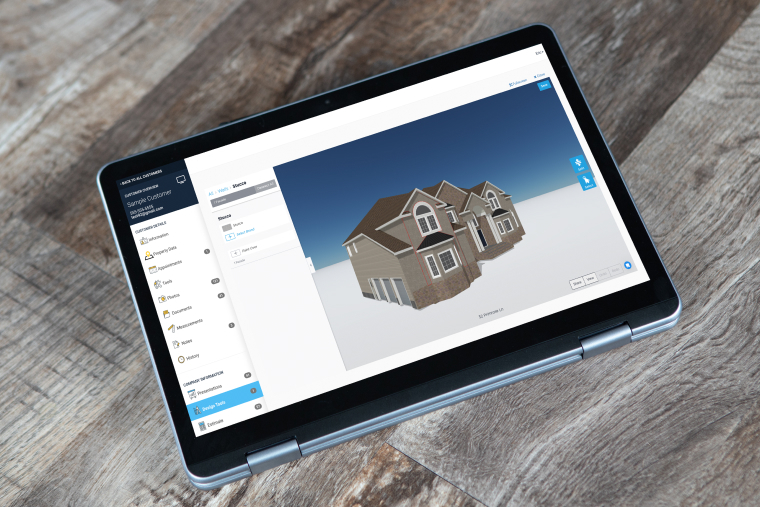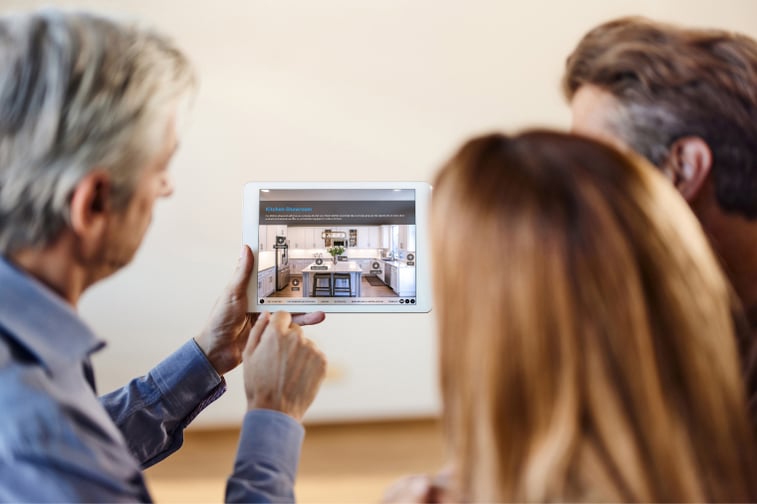Why You Need a Repeatable Sales Process
Whether you’re looking to grow or just want to spend fewer hours at your desk, here’s why you need to adopt a repeatable sales process.
Get more jobs and impress clients with a compelling presentation about why they should hire you.

An excellent visual presentation can distinguish between winning and losing a project. Creating an engaging, convincing presentation that sells is essential for remodeling contractors. Luckily, some simple tips will help you create an incredible presentation that will close more deals and increase your return on investment. Keep reading to learn how to make your presentations sizzle.
When embarking on successful projects, it’s essential to consider your customer's goals. If you can, visualize their dreams, needs, and expectations. Then you will be better positioned to present a successful solution. The needs of older homeowners are different than then first-time home buyers. Aging-In-Place projects are those homeowners wanting to make their homes more accommodating as they age.
It is a good idea to prioritize the end user’s short- and long-term goals for the best results. Showing examples of your work may demonstrate how successful potential solutions could be. The right combination of visualizing ideas, presenting successful projects, and understanding your audience's goals are all essential steps toward successful outcomes.

Your client is interested in discussing their project and, let's face it, themselves. They are looking for a reason to trust and connect with you, the contractor. You will have the opportunity to explain why you are the best fit for their project, so don't worry. However, they must first feel comfortable that you comprehend their vision, are reasonably priced, and can complete the project on schedule.
Software like Ingage will ensure your presentation is visually appealing for your prospect and user-friendly for your sales team. If you are using 3d visualizers, even better. Provide an overview of typical remodeling projects that illustrate functional designs and types of building materials, including defining the scope of work and timelines. Explain the process, including the different phases and critical milestones.
Discuss how budgets are created and any cost-saving techniques that can be used. Crafting a company story that helps your customers understand what you do as a professional. Make project examples for potential customers easily accessible, along with marketing and sales collateral that shows off your company. Confidence is vital when delivering the presentation; make your presentation professional and practice, practice, practice.

Showcase examples of previous work that is relevant to the client's project. Use visual aids like photos and videos to demonstrate your quality of work and attention to detail. Whether photographs of work in process, completed projects, or engaging customer testimonials, strong visuals are powerful in keeping your audience engaged and getting them to commit.
Showcase your happy customers talking about how their family has made the most out of your work — these kinds of visuals resonate. A video testimonial with happy clients in their new dream living room can be made with an iPhone and basic editing skills. Quality visuals make all the difference, whether a photographic view of the process or a representation of success. Looking professional is critical but don’t forget to stand out… so be creative!
As a remodeling contractor, there are many creative ways to conduct a customer presentation to a customer that will help you stand out and win more business. Here are some ideas:
Virtual Reality Tours: Use virtual reality technology to give your customers a 3D tour of their remodel before it's even built. This can help them visualize the final result and make more informed decisions.
Presentations are often an integral factor in making decisions, so you must create a presentation that engages your audience and tells them a story. An effective presentation will also build trust in you and your team and set you apart from the competition.
To ensure that your presentation flows smoothly from beginning to end, organize all of the information into manageable sections, present with interesting visual elements, have relevant examples ready for scenarios where the occasion arises, and practice, practice, practice so that you deliver confidently. With this approach, you will have what it takes to ensure your audience picks your company.
Explaining your work process concisely is key to ensuring clients understand the remodeling project and feel confident in your expertise. Here are some best practices for explaining the process:
When answering questions from the customer, remember that you are the expert, so answer with confidence! It's common for clients to have objections or concerns during your pitch, and it's essential to be prepared to address these objections professionally and effectively. Here are some tips for addressing objections:
Addressing objections professionally and effectively enables remodeling contractors to build trust, establish a positive working relationship with their clients and ensure the project's success. Understanding your customer’s needs allows you to provide relevant information and timelines to most effectively answer their questions, leaving them satisfied with your answers.
Do not be afraid to sell yourself - talk about your experiences or how you believe your skillset could benefit them. You will successfully answer any question with proper confidence and a structured approach! Happy customers tell their family and friends.
Whether you’re looking to grow or just want to spend fewer hours at your desk, here’s why you need to adopt a repeatable sales process.
Ever wonder why you might feel that your business isn’t firing on all cylinders? We’ve compiled the inside scoop into what really goes through a...
Home remodeling can either be exciting and rewarding or it can be a nightmare. Good communication between homeowners and their contractors is key.
Be the first to know about new B2B SaaS Marketing insights to build or refine your marketing function with the tools and knowledge of today’s industry.